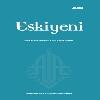Çeviri Kuramları Işığında Kur’an-ı Kerim Meallerindeki Deyimsel “El” ve “Yüz” Çevi-rilerinin Değerlendirilmesi
Çeviri Kuramları, semantik, eşdeğerlik, deyimsel
Some Thoughts on the “Hand” and “Face” Words in the Translations of the Quran. An Evaluation in the Perspective of the Theories of Translation.
Translation theories, Semantics, equivalence, idiomatic,
___
- Bayraklı, B. (2007). Kur’an Meali. İstanbul: Bayraklı Yayınları.
- Baker, M. (1992). In other Words. New York: Routledge.
- Baker, M. (2006). Translation and Conflict. New York: Routledge.
- Elmalılı, H. Y. (2014). Kur’an-ı Kerim ve Türkçe Meali. İstanbul: Andaç.
- Güler, M. G. (2011). Sadeleştirilmiş Kur’an baskılarında Tehlike Nedir? http://www.hakaynasi.com/mustafa-g-guler/855/sadelestirilmis-kuran-baskilarinda-tehlike-nedir-mustafa-g-guler-as- ha.aspx26/08/2016 sayfasından erişilmiştir.
- Holmes, J. S. (2000). The Name and Nature of Translation Studies. The Translation Studies Reader. L, Venuti. (ed). (s.180-193). New York: Routledge.
- Munday, J. (2012). Introducing Translation Studies. London: Routledge.
- Newmark, P. (1981). Approaches to Translation. Oxford: Pergamon.
- Newmark, P. (1991). About Translation. Ontario: Multilingual Matters Ltd.
- Nida, E. (1964). Toward a Science of Translating. Leiden: E.J. Brill.
- Nida, E., & Charles. R. Taber. (2003). The Theory and Practice of Translation. Leiden: E.J. Brill.
- Özek, A., Hayrettin, K., & Turgut, A. (1993). Kur’an-ı Kerim ve Açıklamalı Meali. Ankara: Türkiye Diyanet Vakfı Yayınları.
- Popovic, A. (1970). The Concept Shift of Expressions in Translation Analysis. J, Holmes. (Ed). The Nature of Translation: Essays on the Theory and Practice of Literary Translation. (s. 78-87). Mouton: Slovak Academy of Sciences.
- Reiss, K. (2000). Translation Criticism Potentials and Limitations. London: Routledge.
- Toury, G. (2012). Descriptive Translation Studies and Beyond. Tel Aviv: John Benjamins.
- Venuti, L. (2008). The Translator’s Invisibility A History of Translation. New York: Routledge.
- ISSN: 1306-6218
- Yayın Aralığı: 4
- Başlangıç: 2006
- Yayıncı: Anadolu İlahiyat Akademisi
“Küçük Dünyam” Adlı Hatırat’tan Şapka, Kur’an ve Sinema
İslam ve Sinema “Sinemanın Fıkıh Dili”
Kur’an-ı Kerim Meallerinde Benzer Anlamlılık Sorunu: فعل , صنع veعمل Örneği
Dini Lider Tipolojisi (FETÖ Örneği)
Müteşabih Ayetlerde Belagatlı Vurgu
FETÖ’nün Uluslararası Kodları Cemaatten Terör Örgütlüğüne
İslam’da Birlikte Yaşama Kültürü ve Günümüzde Müslüman Top-lumlarda Zuhur Eden Şiddet
